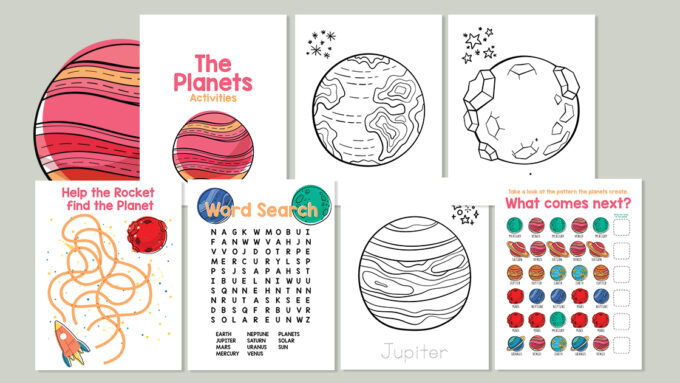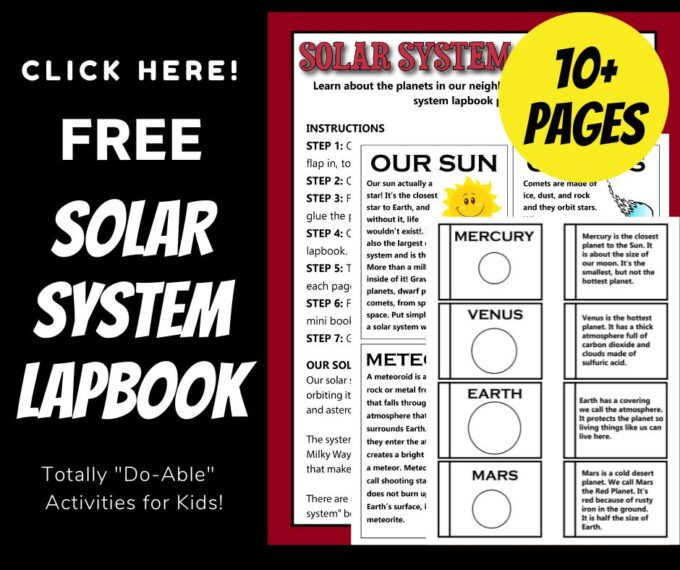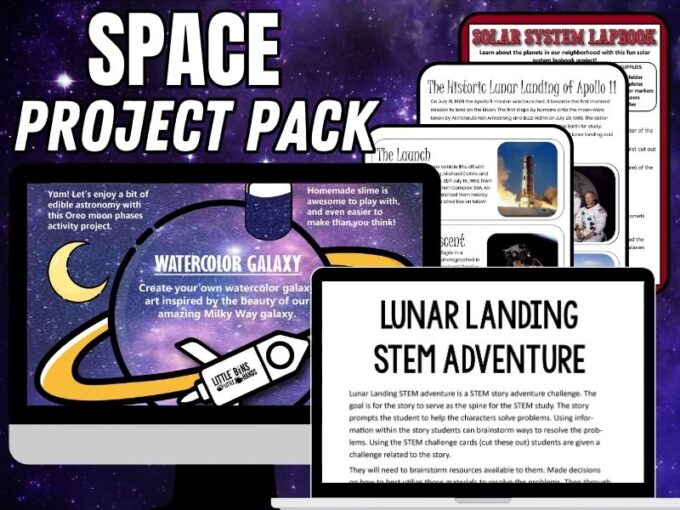Do your kids ever look up into the sky and wonder what’s out there? Learn about the different planets with this fun Solar System lapbook project. Perfect for a solar system unit study whether at home or in the classroom. Here is a simple way to explain the solar system to kids. Our printable space activities make learning easy!
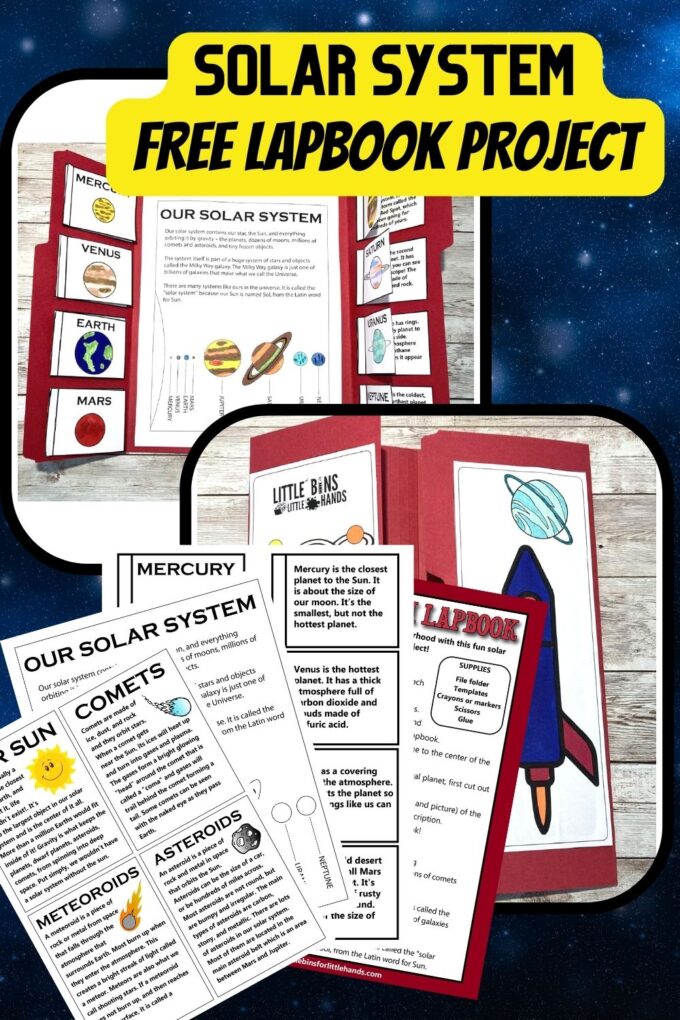
Fun Solar System Project
Our solar system contains our star, the Sun, and everything orbiting it by the pull of its gravity – the planets, dozens of moons, millions of comets, asteroids, and meteoroids.
The solar system itself is part of a huge system of stars and objects called the Milky Way galaxy. The Milky Way galaxy is just one of billions of galaxies that make up what we call the Universe.
There are many stars like ours with planets rotating them in the universe. We call it the “solar system” because our Sun is named Sol, from the Latin word for Sun. Solar systems can even have more than one star.
FUN FACTS ABOUT THE SOLAR SYSTEM
- Our solar system has eight planets: Mercury, Venus, Earth, Mars, Jupiter, Saturn, Uranus, and Neptune.
- The most prominent object in the solar system is of course, the sun.
- The only planet in our solar system that rotates clockwise is Venus. All other planets rotate the same way as the sun, counterclockwise.
- Saturn is the planet with the most moons, followed by Jupiter.
- The largest planet in the solar system is Jupiter, and the hottest planet is Venus.
- Scientists have worked out that the solar system is about 4.6 billions years old.
Learn more about our amazing solar system and its planets with our printable solar system project below. Start with these free planet activity sheets.
How to Make a Solar System Lapbook
Also, check out another hands-on planet activity, our Solar System Diorama Project!
SUPPLIES:
- File folder
- Solar System Printables
- Crayons or markers
- Scissors
- Glue
INSTRUCTIONS:
STEP 1: Open your file folder and then fold each flap in, toward the middle and crease.
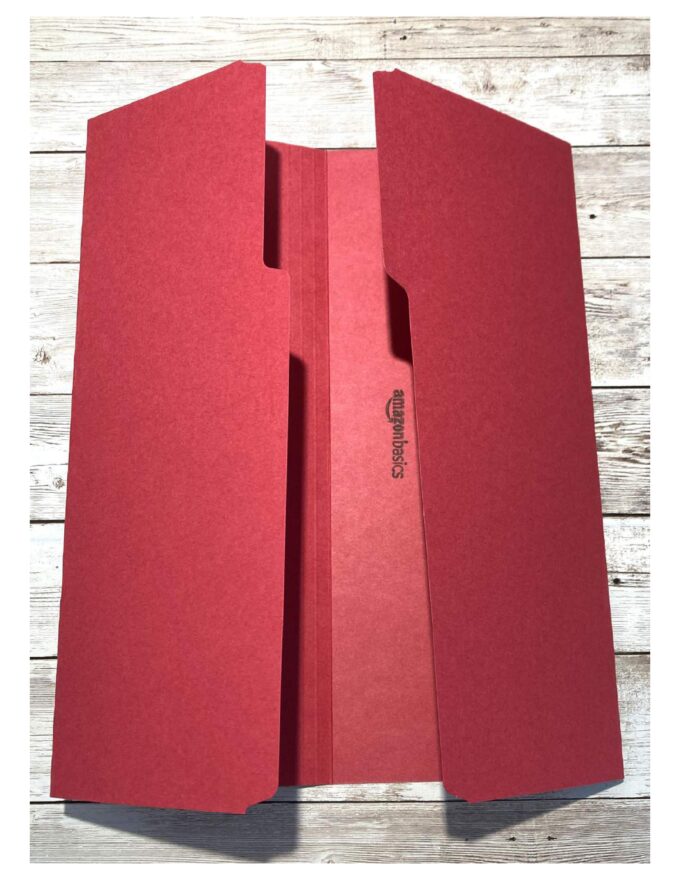
STEP 2: Color your solar system pages.
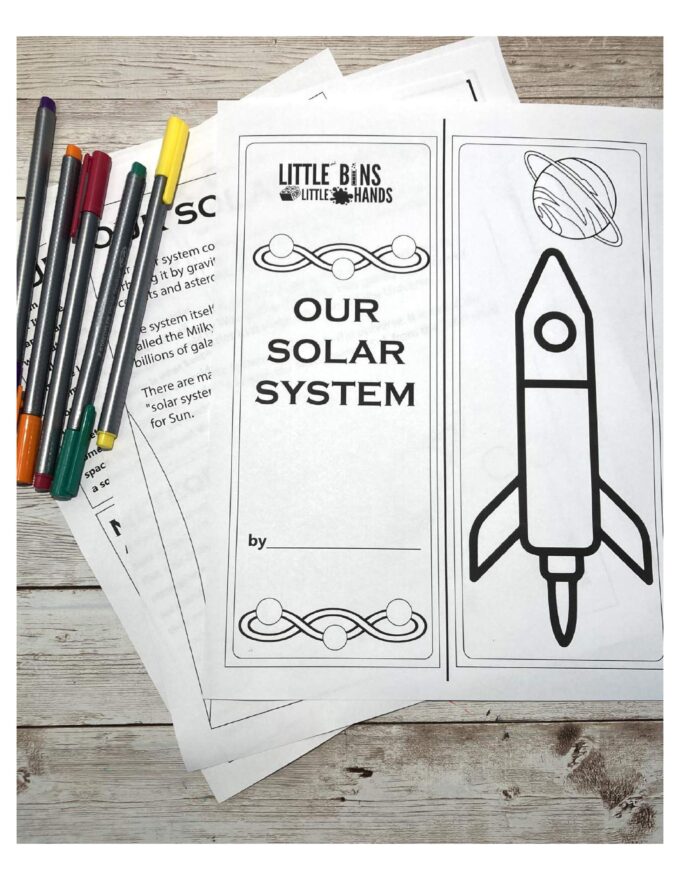
STEP 3: For the cover, cut down the solid line and glue the pieces to each side of the front of the lapbook.

STEP 4: To make the booklets about each individual planet, first cut out each page of the mini-booklets.
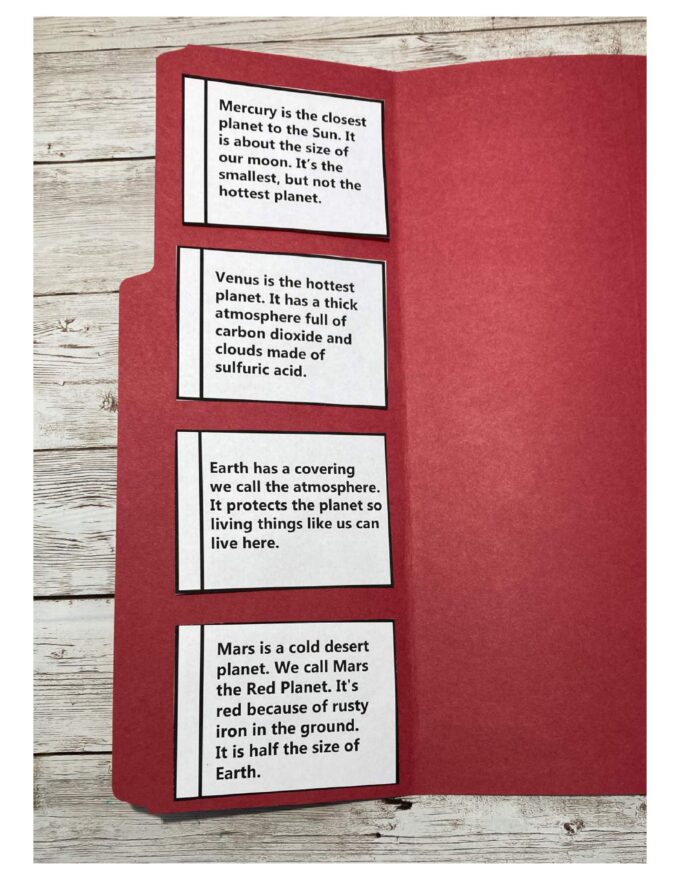
STEP 5: Fold and crease the top page (planet name and picture) of the mini booklets and glue into place on the correct description.
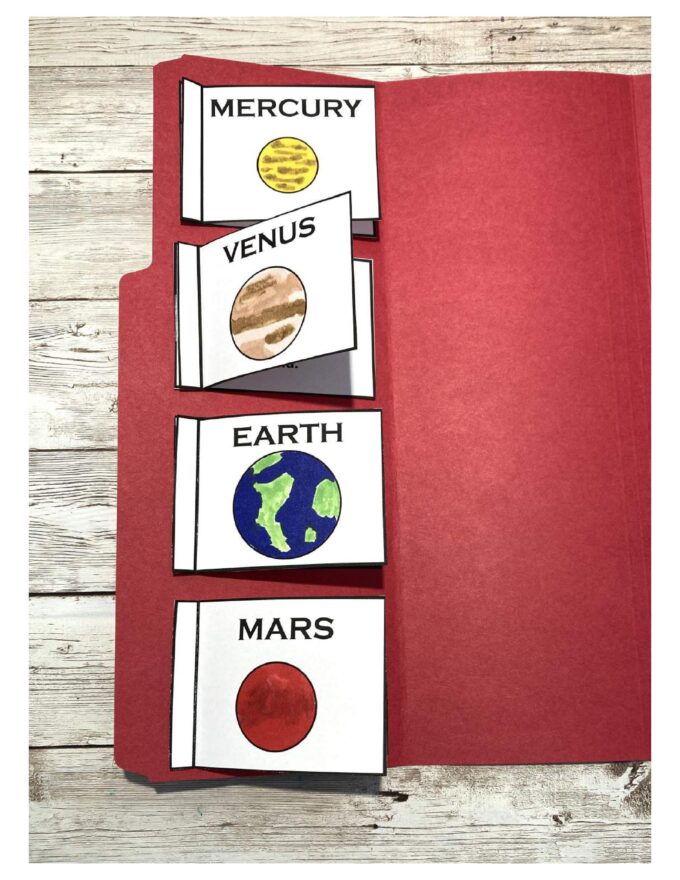
STEP 6: Color and glue the Our Solar System page to the center of the lapbook.
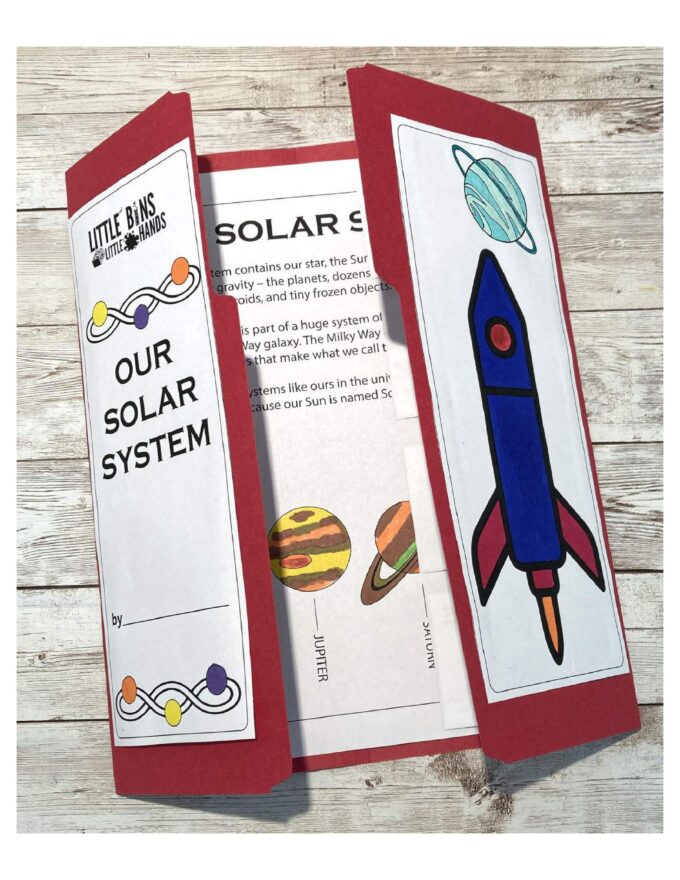
STEP 7: Glue the back page to complete your lapbook!
Read through your finished Solar System lap book and discuss it together!
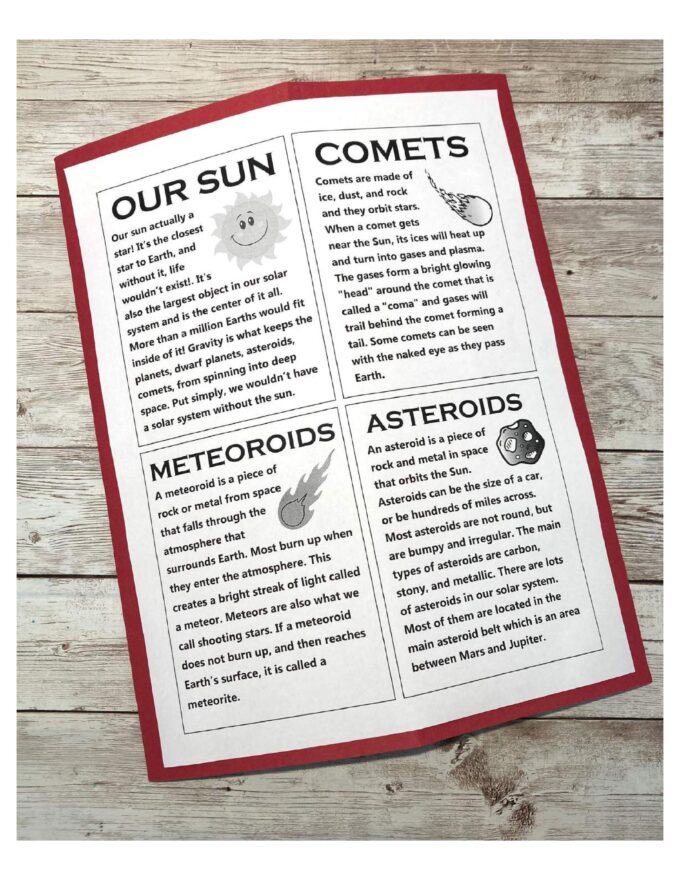
What is a Lapbook?
A lapbook is a fun and creative educational tool that involves making a small, hands-on booklet filled with information, images, and interactive elements about a particular topic or subject. It’s a way for students to showcase their learning in an engaging and visually appealing manner.
To create a lapbook, you typically fold a file folder in half to create a “booklet.” Inside, you can include various mini-books, flaps, pockets, and other interactive components where you place information, diagrams, pictures, and even small activities related to the topic. Lapbooks often include a mix of text, drawings, cut-outs, and even interactive elements like flip-ups and pull-outs.
Lapbooks can be used across a wide range of subjects and topics, from science and history to literature and even creative writing. They encourage hands-on learning, creativity, and critical thinking as students organize and present information in a visually appealing and interactive way.
Lapbooks are particularly popular in homeschooling environments, classrooms, and educational settings where a more interactive and engaging approach to learning is desired. They provide a tangible representation of knowledge that students can refer to and proudly display.
How to Use a Lapbook
Tip #1 Put together a bin of materials including scissors, glue, double sided tape, craft tape, markers, file folders, etc. Everything is ready to go when you are and getting started is that much easier.
Tip #2 Although the printable templates are a complete resource, you can absolutely add them to your lapbook if desired or use the downloads as a starting point for your own creations.
Tip #3 Lapbooks don’t have to look pretty and organized! They just need to be fun and interesting for the kiddos. Let your kids be creative even if a section is glued off-center. They are still learning even if it doesn’t turn out exactly as pictured.
Check out these lapbook project ideas…
CLICK HERE TO GET YOUR PRINTABLE SOLAR SYSTEM PROJECT
Questions To Ask Kids About The Solar System
What is the solar system?
The solar system is made up of the Sun, which is a super bright star, and all the objects that go around it, like planets, moons, asteroids, and comets.
How many planets are there in the solar system?
There are eight planets in our solar system. They are Mercury, Venus, Earth, Mars, Jupiter, Saturn, Uranus, and Neptune.
Which planet is closest to the Sun?
Mercury is the closest planet to the Sun.
What’s the biggest planet in the solar system?
Jupiter is the biggest planet. It’s so big that all the other planets could fit inside it!
Why is Pluto not considered a planet anymore?
Pluto was considered a “dwarf planet” because it’s much smaller than the other planets and shares its orbit with other objects.
What’s the hottest planet?
Venus is the hottest planet, even though it’s not the closest to the Sun. Its thick atmosphere traps heat and makes it hot.
Can people live on other planets?
Right now, people can only live on Earth because it has the air, water, and temperature that we need. Scientists are studying other planets to see if people could live there in the future.
What are moons?
Moons are like Earth’s helpers in space. They go around planets, just like planets go around the Sun. Earth has one moon, but other planets have more!
What’s a comet?
A comet is like a dirty snowball that travels through space. It can grow a bright, glowing tail when it gets close to the Sun.
How long does it take for Earth to go around the Sun?
Earth takes about 365 days to go around the Sun. That’s why we have one year!
Can we see the planets from Earth?
Yes, we can see some planets from Earth! Planets like Venus, Mars, Jupiter, and Saturn can be seen with our eyes, especially when it’s dark outside.
Extend the Learning
Pair this solar system project with one or more of these easy and hands on space activities for kids.
Enjoy a bit of edible astronomy with these Oreo moon phases. With a favorite cookie sandwich, explore how the moon’s shape or moon phases change over the course of the month.
Another fun way to learn the moon phases is with this simple moon craft activity.
Build your own satellite and learn a little bit about a scientist, Evelyn Boyd Granville, in the process.
Learn about the constellations you can see in the night sky with these constellation activities.
Create your own DIY planetarium from a few simple supplies and explore the night sky.
Build an Aquarius Reef Base model.
Set up this free Solar System Model (instant download this week).
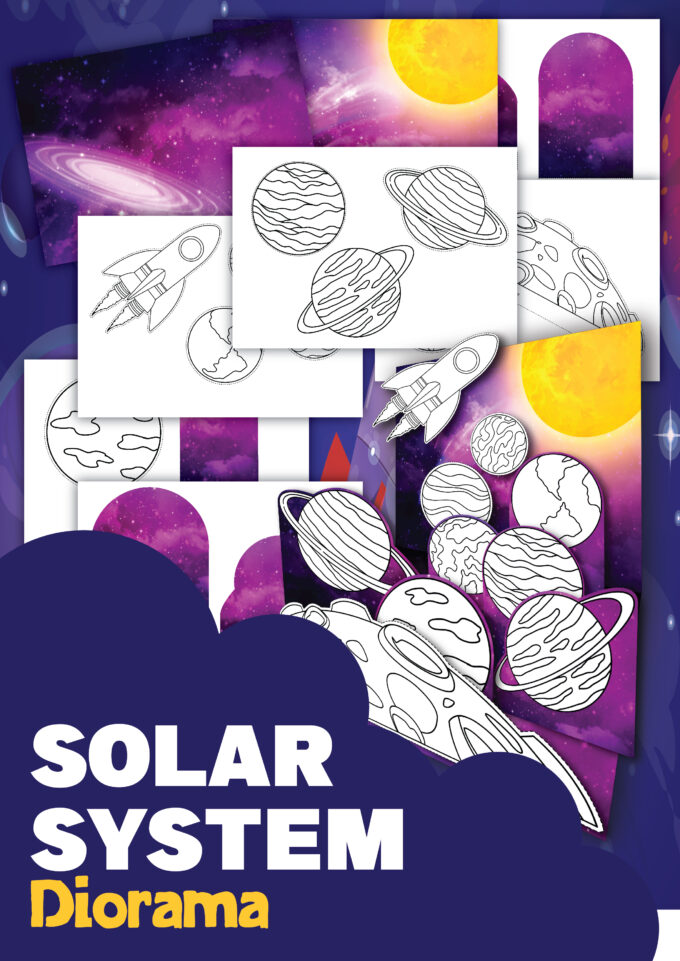
Printable Space Projects Pack
With 250+ pages of hands-on fun space themed fun, you can easily explore classic space themes with your kiddos including moon phases, constellations, the solar system, and of course the 1969 Apollo 11 lunar landing with Neil Armstrong.
⭐️ Activities include supply lists, instructions, and step-by-step pictures. Also Includes FULL Space Camp Week. ⭐️
Celebrate the 1969 lunar landing with easy-to-do activities at home, with groups, at camp, or in the classroom. Read up on this famous event and learn more about Neil Armstrong as well.
- Moon STEAM activities combine science, technology, engineering, art, and math with supply lists, set up and process photos, and science information. Craters, fizzy moon rocks, edible moon phases, watercolor galaxies, a DIY planetarium, bottle rocket, and so MUCH MORE!
- Printable Moon STEM challenges that are simple but engaging for home or classroom. Also included, is a Moon theme STEM Story with challenges perfect for going on a STEM adventure inside or outside!
- Moon phases & Constellation activities include charting moon phases, oreo moon phases, moon phases mini book, and more!
- Solar System activities include a solar system lapbook template and plenty of information to learn about the solar system and beyond!
- Moon extras include I-Spy, algorithm game, binary code project, 3D rocket building, thaumatropes, and MORE!


